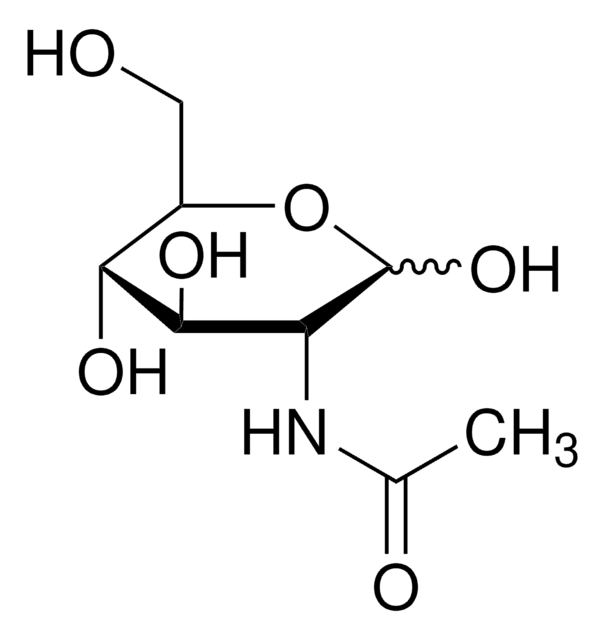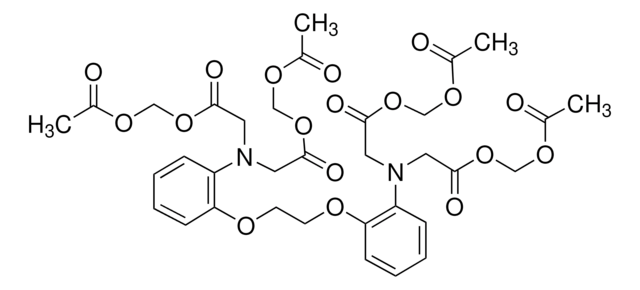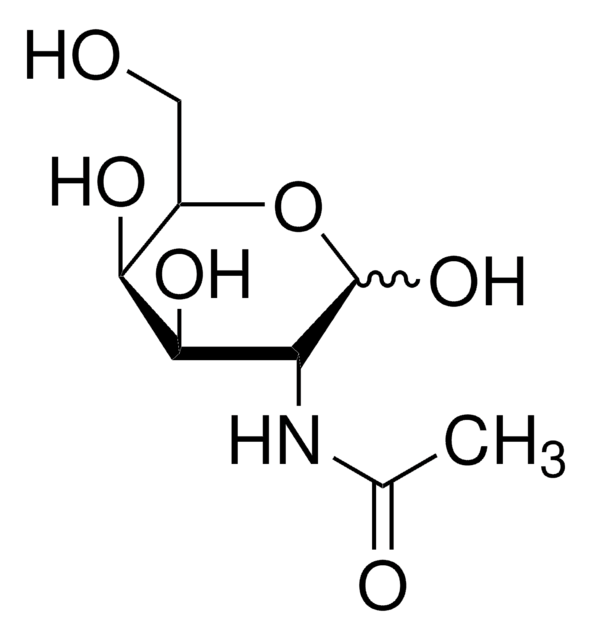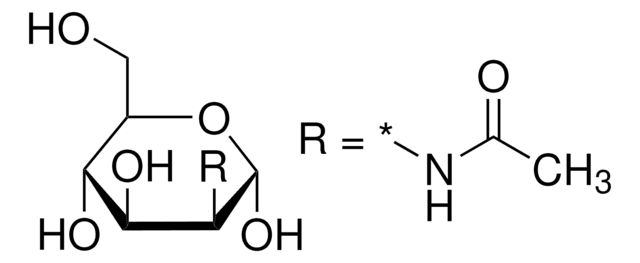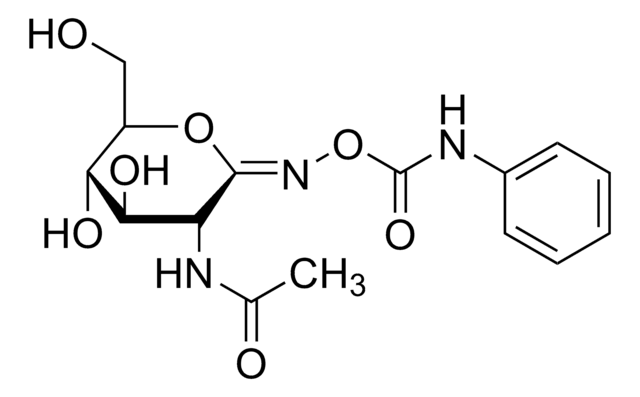Kluczowe dokumenty
A3286
N-Acetyl-D-glucosamine
BioReagent, suitable for cell culture
Synonim(y):
2-Acetamido-2-deoxy-D-glucose, D-GlcNAc
About This Item
Polecane produkty
linia produktu
BioReagent
Poziom jakości
Próba
≥95% (HPLC)
Postać
powder
metody
cell culture | mammalian: suitable
mp
211 °C (dec.) (lit.)
temp. przechowywania
−20°C
ciąg SMILES
CC(=O)N[C@H]1C(O)O[C@H](CO)[C@@H](O)[C@@H]1O
InChI
1S/C8H15NO6/c1-3(11)9-5-7(13)6(12)4(2-10)15-8(5)14/h4-8,10,12-14H,2H2,1H3,(H,9,11)/t4-,5-,6-,7-,8?/m1/s1
Klucz InChI
OVRNDRQMDRJTHS-RTRLPJTCSA-N
Szukasz podobnych produktów? Odwiedź Przewodnik dotyczący porównywania produktów
Opis ogólny
Zastosowanie
- as a substrate to develop dot-blots
- as a substrate to reveal alkaline phosphatase in the immunohistochemical analysis
- to detect specific immune complexes in western blot analysis
Działania biochem./fizjol.
Kod klasy składowania
11 - Combustible Solids
Klasa zagrożenia wodnego (WGK)
WGK 3
Temperatura zapłonu (°F)
Not applicable
Temperatura zapłonu (°C)
Not applicable
Środki ochrony indywidualnej
Eyeshields, Gloves, type N95 (US)
Certyfikaty analizy (CoA)
Poszukaj Certyfikaty analizy (CoA), wpisując numer partii/serii produktów. Numery serii i partii można znaleźć na etykiecie produktu po słowach „seria” lub „partia”.
Masz już ten produkt?
Dokumenty związane z niedawno zakupionymi produktami zostały zamieszczone w Bibliotece dokumentów.
Klienci oglądali również te produkty
Nasz zespół naukowców ma doświadczenie we wszystkich obszarach badań, w tym w naukach przyrodniczych, materiałoznawstwie, syntezie chemicznej, chromatografii, analityce i wielu innych dziedzinach.
Skontaktuj się z zespołem ds. pomocy technicznej